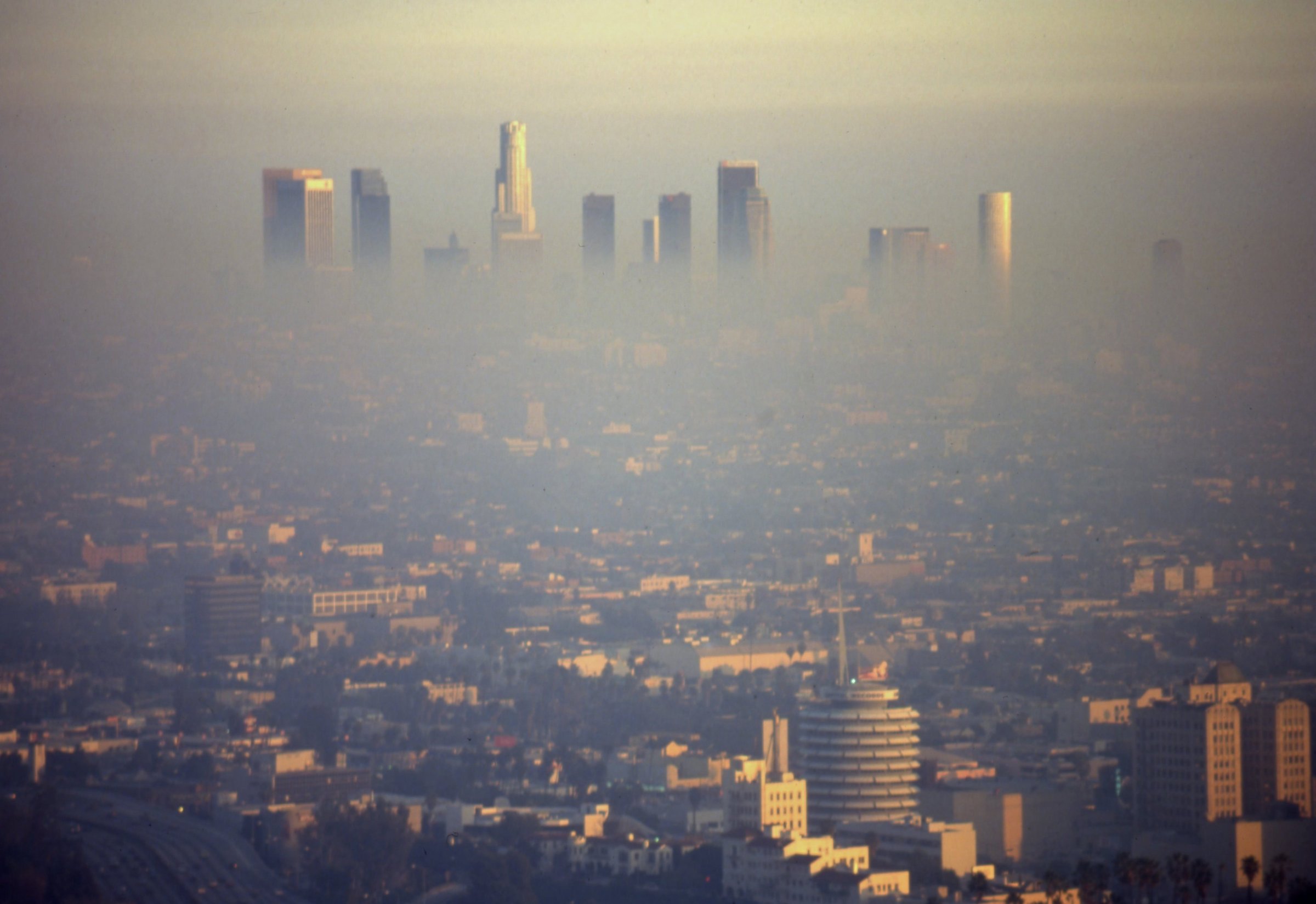
Even before President Donald Trump pulled the United States out of the Paris Agreement, California Governor Jerry Brown loved to talk about climate change and his efforts to create what he calls “the most integrated policy to deal with climate change of any political jurisdiction in the Western Hemisphere.”
But in California addressing climate change isn’t just about saving the world from rising sea levels, intense heat and extreme weather events. Environmental policy experts say the state’s aggressive global warming program will also help solve a longstanding public health problem.
Thanks to its sprawling cities, heavy reliance on cars and an enormous agriculture industry, California has long been among the most polluted states in the nation. Today, eight out of ten Californians live in a county with toxic air that contributes to a range of health problems such as asthma, heart disease and even lung cancer.
The connection is straightforward: the same sources of emissions that cause global warming also produce pollutants that damage human health. Targeting those sources, like power plants, factories and vehicles, fights climate change and also improves human health. And no place in the country stands to benefit more than California.
“In California, we need to address our climate pollution problem, and we need to address our air quality problem,” says Adrian Martinez, an attorney at the environmental law firm Earthjustice who works on clean air enforcement. “The goals go hand in hand. We need to drastically decrease the amount of fossil fuels we combust.”
But actually tackling the public health problem in California comprehensively has until recently seemed like a far-off goal. While the state has moved away from the coal-fired power plants that harm human health and contribute to global warming, rampant pollution from the transportation sector has remained difficult to solve. Large cities with little public transportation mean millions of residents drive dozens of miles every day simply to go to work, take children to school and run basic errands. Those who do take mass transit largely rely on buses, which produce their own air pollution. Nor does Mother Nature do the state any favors. Pollution collects in the valleys and basins that house population centers and tends to stay there because of the relatively low amount of wind and rain.
For years, California has tried to curb the harmful emissions on its roads. In 1990, California established a reduction program, and to this day the state is the only in the nation to issue its own emissions standards for passenger vehicles. That has a ripple effect, since more than a dozen states have chosen to enforce California’s rule and carmakers generally introduce a single model that can meet standards across the nation.
In the more than 25 years since California launched its program, the prospect of embracing zero-emissions vehicles on a large scale has become increasingly possible. In places without California’s pollution problem, global warming has led policymakers to move away from the internal combustion engine. A range of countries from Norway to China have set electric vehicle targets. And, with the writing on the wall, automakers have pushed ahead with technological advances to meet the demand.
“Passenger vehicles, shipping, buses: if you add up all of the sources on wheels, they really are the greatest opportunity,” says Sean Hecht, who runs a center on environmental law at the University of California, Los Angeles.
With this transition in mind, leaders in California have set ambitious targets for moving to electric vehicles. An executive order signed by Brown in 2012 calls for 1.5 million zero emission vehicles by 2025, and the state has funded infrastructure initiatives meant to advance the goal.
“LA is kind of the perfect place to become the electric vehicle capital of the world: we have lots of passenger vehicles, we have lots of transit buses,” says Martinez. “Electrification of our transportation sector is critical.”
More Must-Reads From TIME
- The 100 Most Influential People of 2024
- The Revolution of Yulia Navalnaya
- 6 Compliments That Land Every Time
- What's the Deal With the Bitcoin Halving?
- If You're Dating Right Now , You're Brave: Column
- The AI That Could Heal a Divided Internet
- Fallout Is a Brilliant Model for the Future of Video Game Adaptations
- Want Weekly Recs on What to Watch, Read, and More? Sign Up for Worth Your Time
Write to Justin Worland at justin.worland@time.com